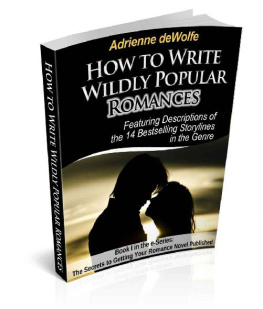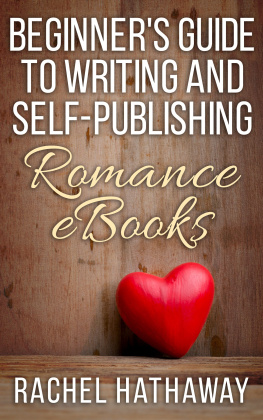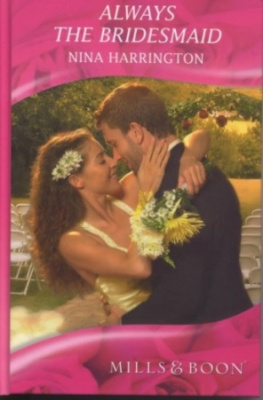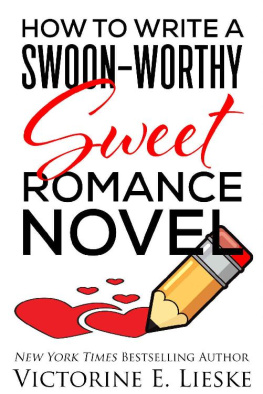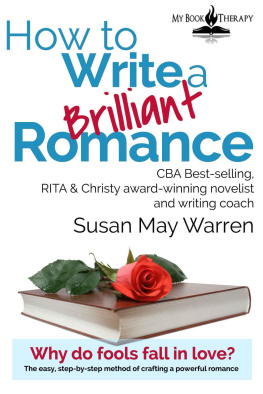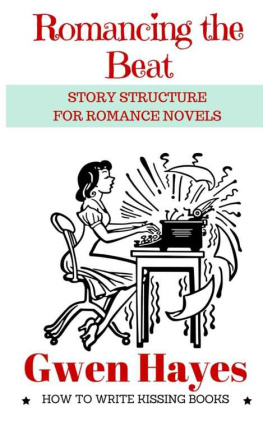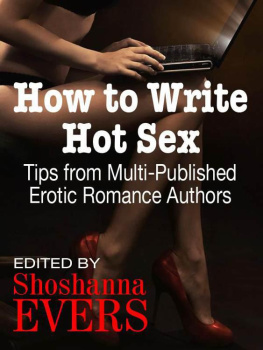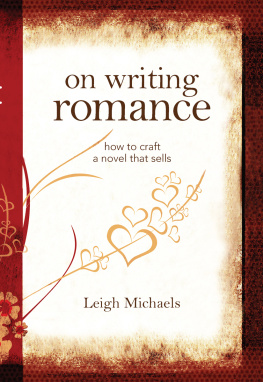You, Too, Can Write a Romance Novel
Jos de la Rosa
Translated by Paul Bowen
You, Too, Can Write a Romance Novel
Written By Jos de la Rosa
Copyright 2019 Jos de la Rosa
All rights reserved
Distributed by Babelcube, Inc.
www.babelcube.com
Translated by Paul Bowen
Babelcube Books and Babelcube are trademarks of Babelcube Inc.
YOU, TOO, CAN WRITE A ROMANCE NOVEL
An essential manual both for those who wish to start writing romance novels, as well as for already established authors.
Author: Jos de la Rosa
Translator: Paul Bowen
1st edition: November, 2019
2019, Jos de la Rosa
2019 Paul Bowen
I started writing my blog because I wanted to relate my experiences as an educator, publisher, reader and fan of the romance narrative in general. It seemed like an appropriate place from which I could display my knowledge and express myself about my impressions, findings and opinions, but little else. These days, I realise that it could also be a driving force for many authors (even for some who dont yet know they are an author) to take up pen and paper, or to take to their keyboards and convert their ideas and dreams into reality by way of producing their own romance novel.
The reason why this manual will be of interest to you could well be for one or more of the following:
i) You like romance novels and at some point, the thought of writing one has occurred to you... But would you be capable of writing one?
ii) You have written a romance novel but still havent managed to get it published and you need to test out if what you are doing is right or not;
iii) Or, perhaps you are a romance novel writer who wishes to broaden and/or reinforce your knowledge.
Whatever your reason or reasons, you have found the ideal guide: a manual that will be with you through a widely-tested methodology until you have written a successful romance novel. That's right, the object of this book by the time you have finished it, is none other than for you to have written the complete and perfect skeleton or outline for your own romance novel that could be developed into a novel for publication; a structurally perfect, successful novel. This has been attested to by many students who have used this method for years.
YOU, TOO, CAN WRITE A ROMANCE NOVEL brings together, expands upon, updates and puts in order the theoretical and practical knowledge taught over many years in writing classrooms and workshops. It is a practical guide full of clear examples, readings and exercises to help you build any novel you have in mind. It could also be used to discover exactly what it is that does not fit or that is not quite right in the pages of a novel you have already written, but may be lying dormant in your desk drawer. It is a tested method corroborated by many years of practice. With this manual, I wanted to create a tool that is useful before, during and after the writing process; something that guarantees that the novel emerging from your pen or keyboard has the perfect structure and plot, with solid, believable and attractive characters of interest to publishers.
Among its pages you will find a step-by-step guide for building your novel. Starting with the storyline, you will discover what aspects must be taken into account in order to find fresh ideas. We will turn these aspects into a sort of roadmap upon which you can write your story. We will talk about subgenres and their possibilities as a driver of change in the story. We will then move on to the structure (perhaps one of the most difficult aspects to master in this imprecise universe that is the novel), employing sure-fire and fool proof techniques that create solid and addictive novels. However, you must handle this technique correctly before even considering breaking any of these rules. As a writer your mission is to continue learning, always trying new ways and new things, but first you must master these basic rules and techniques.
We will work in depth with secondary plots and characters as these are a necessary part of the action. And we will become familiar with how to build a romantic character, how to create his or her attributes, what possibilities he or she has within a story, and what is the characters arc of transformation throughout the novel.
And lets not forget the concepts of time and space within the narrative. The space in which the novel takes place must work in order for the novel to work. It has its own characteristics and rules, both of which must also be mastered. Time is also a malleable element that will give the work dimension. We will review in depth the techniques for documenting your novels, as this is one of the most laborious and yet at the same time exciting aspects you will face as a writer.
We will go on to talk about the narrative elements, and of course how to plan the novel, how to arrange each part and how to organise it. It will be at this point that you will have all the necessary ingredients to start writing your novel. But will you have too many plots and subplots? Will you have too many characters and scenes? Now is the time to plan them all, like a large road map that must be laid out before you reach your desired destination.
We will see in detail the elements of a good ending. We all know that every single bit of tension should be resolved at the climax. However, what should happen after the climax? We can finish the story as we wish, but in the romance genre our readers must end up feeling satisfied, even if one of the protagonists dies, even if it ends with a love torn apart. This is the challenge you must face.
We will continue with one of the most important aspects you must face as a writer: editing, correcting and changing. We should not see it as something independent or optional. A novel has not yet been finished until it has gone through an exhaustive and methodical correction process. Think about the time it took you to write your novel. Think about the time you spent creating the road map for it. Well, you'll only have one opportunity per publisher. If you send your work to a publisher with deficiencies, it will be rejected and it wont get a second chance.
By the end of this manual, we will have found out how to place our precious manuscript into the hands of readers. We will examine both the usual methods and the not so usual ones, while examining formulas that work well. We will talk about publishing lines and policies, literary agents, how to send a manuscript to publishers, as well as self-publishing. All the keys and techniques to seduce publishers so that our novel reaches the hands of readers in the shortest possible time.
We will see all this in detail, with the aid of examples, readings and exercises that will help you to understand each chapter, so that after you have completed each one, your novel will become reality. Your novel will be built step-by-step using your imagination.
Now take a deep breath, hold it for a few seconds and then let it out slowly. What you have in your hands is a path for you to follow, a way of doing things. A new road that, once you have travelled along it, will leave you with the outline for a new novel waiting to be written by you. Perhaps a new profession awaits you; that of becoming a writer. Theres just one more thing left to say: lets go!
Next page

